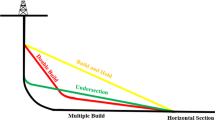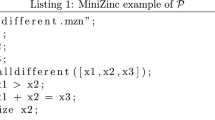Abstract
Long-term operation optimization of multipurpose reservoirs is highly important in arid and semi-arid countries challenged by climate change. This paper suggests an objective function combining two competitive shortage indicators for multi-objective reservoir operation optimization. An improved genetic algorithm including a smoothing constraint, reducing infeasible fluctuations of the operation policy, is developed to solve this problem. Operating curves were optimized jointly to hedging factors aiming at avoiding severe droughts and high damages for users. The proposed function was compared with the conventional objective function of minimizing the sum of squared deviations (SSD) between releases and demands. Different combinations of weights of the objectives linked to the Moroccan reservoir were studied. The proposed objective function yields to improved results in terms of computation requirements since it converges quicker and it leads to better supply performance. For drinking water use, the frequency of shortage was reduced by 66% and the maximum deficit by 14% whereas for irrigation the frequency of shortage was curtailed by 6%. The operating curves obtained by the developed optimization model were then compared with static operating rule curves simulated in RIBASIM. The superiority of variable optimized rule curves was proven compared with stable operating mode over time.


















Similar content being viewed by others
References
Adeloye, A. J., & Dau, Q. V. (2019). Hedging as an adaptive measure for climate change induced water shortage at the pong reservoir in the Indus Basin Beas River, India. Science of the Total Environment, 687, 554–566. https://doi.org/10.1016/j.scitotenv.06.021
Ahmadianfar, I., Adib, A., & Taghian, M. (2016). Optimization of multi-reservoir operation with a new hedging rule: Application of fuzzy set theory and NSGA-II. Applied Water Science. https://doi.org/10.1007/s13201-016-0434-z
Ahmadianfar, I., & Zamani, R. (2020). Assessment of the hedging policy on reservoir operation for future drought conditions under climate change. Climatic Change, 159, 253–268. https://doi.org/10.1007/s10584-020-02672-y
Agarwal, S., Patil, J. P., Goyal, V. C., & Singh, A. (2019). Assessment of water supply-demand using Water Evaluation and Planning (WEAP) model for Ur River Watershed, Madhya Pradesh, India. Journal of The Institution of Engineers (India): Series A, 100, 21–32. https://doi.org/10.1007/s40030-018-0329-0
Al-Aqeeli, Y.H., Lee, T.S., & Abd Aziz, S. (2016). Enhanced genetic algorithm optimization model for a single reservoir operation based on hydropower generation: Case study of Mosul reservoir, northern Iraq, Springerplus. Jun 21;5(1):797. https://doi.org/10.1186/s40064-016-2372-5 PMID: 27390638, PMCID: PMC4916075.
Anand, J., Gosain, A. K., & Khosa, R. (2018). Optimisation of multipurpose reservoir operation by coupling Soil and Water Assessment Tool (SWAT) and genetic algorithm for optimal operating policy (case study: Ganga River Basin). Sustainability, 10(5), 1660. https://doi.org/10.3390/su10051660
Badraoui, A., Hajji, A. (2001). Envasement des retenues de barrages. Revue la Houille Blanche n° 6/7, pp 72 - 75.
Chang, F. J., Chen, L., & Chang, L. (2005). Optimizing the reservoir operating rule curves by genetic algorithms. Hydrological Processes, 19(11), 2277–2289.
Chen, L. (2003). Real coded genetic algorithm optimization of long term reservoir operation. Journal of the American Water Resources Association, 39(5), 1157–1165.
Chiamsathi, C., Adeloye, A. J., Bankaru-Swamy, S. (2014). Genetic algorithms optimization of hedging rules for operation of the multi-purpose Ubonratana reservoir in Thailand. Proceedings of the International Association of Hydrological Sciences, Bologna, Italy, 4–6 June.
Dobson, B., Wagener, T., & Pianosi, F. (2019). An argument-driven classification and comparison of reservoir operation optimization methods. Advances in Water Resources, 128, 74–86.
Driouech, F., Mahé, G., Déqué, M., Dieulin, C., El Heirech, T., Milano, M., Benabdelfadel, A. & Rouche, N. (2010). Evaluation d’impacts potentiels de changements climatiques sur l’hydrologie du bassin versant de la Moulouya au Maroc. Global change: Facing risks and threats to water resources (Proc. of the Sixth World FRIEND Conference, Fez, Morocco, October 2010). IAHS Publ. 340
DRPE. (2013). Study of water management optimization of the hydraulic complex of Mohamed V-Oued Za-Hassan II
Fayaed, S., El-Shafie, A., & Jaafar, O. (2013). Reservoir-system simulation and optimization techniques. Stochastic Environmental Research and Risk Assessment, 27(7), 1751–1772.
Fowe, T., Nouiri, I., Ibrahim, B., Karambiri, H., & Paturel, J. E. (2015). OPTIWAM: an intelligent tool for optimizing irrigation water management in coupled reservoir–groundwater system. Water Resources Management, 115, 1–21.
General Directorate of Water. (n.d.). Situation journalière des principaux grands barrages. http://81.192.10.228/patrimoine/barrages/situation-journaliere-des-principaux-grands-barrages/
Goldberg, D. E. (1989). Genetic algorithms in search, optimization and machine learning. Addison-Wesley Longman Publishing Co.
Hinçal, O., Altan-Sakarya, A. B., & Ger, A. M. (2011). Optimization of multireservoir systems by genetic algorithm. Water Resources Management, 25(1465–1487), 2011.
Holland, J. H. (1975). Adaptation in Natural and Artificial Systems. MIT.
Hsu, N. S., & Cheng, K. W. (2002). Network flow optimization model for basin scale water supply planning. Journal of Water Resources Planning and Management ASCE, 128(2), 102–112. https://doi.org/10.1061/(ASCE)0733-9496(2002)128:2(102)
Hu, T., Zhang, X., Zeng, X., & Wang, J. (2016). A two-step approach for analytical optimal hedging with two triggers. Water, 8, 52.
Jahandideh-Tehrani, M., Bozorg-Haddad, O., & Loáiciga, H. A. (2019). Application of non-animal–inspired evolutionary algorithms to reservoir operation: An overview. Environmental Monitoring and Assessment, 191, 439.
Jain, S. K., Reddy, N. S. R. K., & Chaube, U. C. (2005). Analysis of a large inter-basin water transfer system in India. Hydrological Sciences Journal, 50(1), 125–137.
Jamshidi, J., & Shourian, M. (2019). Hedging rules-based optimal reservoir operation using bat algorithm. Water Resources Management, 33, 4525–4538. https://doi.org/10.1007/s11269-019-02402-9
Jothiprakash, V., Shanthi, G., & Arunkumar, R. (2011). Development of operational policy for a multi-reservoir system in India using genetic algorithm. Water Resources Management, 25(10), 2405–2423.
Kang, M. G., & Park, S. W. (2014). Combined simulation-optimization model for assessing irrigation water supply capacities of reservoirs. Journal of Irrigation and Drainage Engineering, 140(5), 04014005. https://doi.org/10.1061/(asce)ir.1943-4774.0000726
Kangrang, A., & Lokham, L. (2013). Optimal reservoir rule curves considering conditional ant colony optimization with simulation model. Journal of Applied Sciences, 13, 154–160.
Kangrang, A., & Chaleeraktrakoon, C. (2007). Genetic algorithms connected simulation with smoothing function for searching rule curves. American Journal of Applied Sciences, 4(2), 73–79. https://doi.org/10.3844/ajassp.2007.73.79
Khan, N.M., & Tingsanchali, T. (2009). Optimization and simulation of reservoir operation with sediment evacuation: a case study of the Tarbela Dam, Pakistan. Hydrological Processes, 18 pp
Labadie, J. W. (2004). Optimal operation of multireservoir systems: State-of-the-art review. Journal of Water Resources Planning and Management, 130(2), 93–111.
Liu, Y., Zhao, J., & Zheng, H. (2018). Piecewise-linear hedging rules for reservoir operation with economic and ecologic objectives. Water, 10, 865.
Louati, M. H., Benabdallah, S., Lebdi, F., & Milutin, D. (2011). Application of a genetic algorithm for the optimization of a complex reservoir system in Tunisia. Water Resources Management, 25(2387–2404), 2011.
Messaoud, E. (2015). Contribution à la gestion du problème de transport dynamique et statique durable. Université Sidi Mohamed Ben Abdellah de Fès.
Messaoud, E., Bouchakour, J., & Elhilali, A. A. (2014). Solving the dynamic Vehicle Routing Problem using genetic algorithms. International Conference on Logistics Operations Management, Rabat, 2014, 62–69. https://doi.org/10.1109/GOL.2014.6887419
Oliveira, R., & Loucks, D. P. (1997). Operating rules for multireservoir systems. Water Resources Research, 33(4), 839–852.
Rani, D., & Moreira, M. (2010). Simulation-optimization modeling: a survey and potential application in reservoir systems operation. Water Resources Management, 24, 1107–1138.
Rani, D., & Srivastava, D. K. (2016). Optimal operation of Mula reservoir with combined use of dynamic programming and genetic algorithm. Sustainable Water Resources Management, 2(1), 1–12.
Reddy, M. J., & Kumar, D. N. (2006). Optimal reservoir operation using multi-objective evolutionary algorithm. Water Resources Management, 20(6), 861–878.
Remini, W., & Remini, B. (2003). La sédimentation dans les barrages de l’Afrique du nord. LARHYSS Journal, 2, 45–54.
Roudi-Fahimi, F., & Kent, M. (2007). Challenges and opportunities—The population of the Middle East and North Africa. Population Bulletin, 62, 1–20.
Sharif, M., & Wardlaw, R. (2000). Multireservoir systems optimization using genetic algorithms: Case study. Journal of Computing in Civil Engineering, 14(4), 255–263.
Shiau, J. T. (2009). Optimization of reservoir hedging rules using multiobjective genetic algorithm. Journal of Water Resources Planning and Management, 135(5), 355–363.
Shourian, M., Mousavi, S., & Tahershamsi, A. (2008). Basin-wide water resources planning by integrating PSO algorithm and MODSIM. Journal of Water Resources Management, 22(10), 1347–1366.
Srinivasan, K., & Kumar, K. (2018). Multi-objective simulation-optimization model for long-term reservoir operation using piecewise linear hedging rule. Water Resources Management, 2018(32), 1901–1911.
Suiadee, W., & Tingsanchali, T. (2007). A combined simulation-genetic algorithm optimization model for optimal rule curves of a reservoir: a case study of the Nam Oon Irrigation Project, Thailand. Hydrological Processes, 21(23), 3211–3225.
Tadrist, N., Debauche, O., Remini, B., Dimitri Xanthoulis, D., & Degre, A. (2016). Impact de l’érosion sur l’envasement des barrages, la recharge des nappes phréatiques côtières et les intrusions marines dans la zone semi-aride méditerranéenne : cas du barrage de Boukourdane (Algérie). Biotechnologie, Agronomie, Societe et Environnement, 20(4), 453–454.
Taghian, M., Rosbjerg, D., Haghighi, A., & Madsen, H. (2014). Optimization of conventional rule curves coupled with hedging rules for reservoir operation. Journal of Water Resources Planning and Management, 140, 693–698.
Terink, W., Immerzeel, W., & Droogers, P. (2013). Climate change projections of precipitation and reference evapotranspiration for the Middle East and Northern Africa until 2050. International Journal of Climatology, 33, 3055–3072.
Tramblay, Y., Jarlan, L., Hanich, L., & Somot, S. (2018). Future scenarios of surface water resources availability in North African dams. Water Resources Management, 32, 1291–1306. https://doi.org/10.1007/s11269-017-1870-8
UNDP United Nations Development Programme. (2013). Water governance in the Arab region: managing scarcity and securing the future.
Acknowledgements
The authors would like to thank Professor Imad El HARRAKI (Rabat Superior National School of Mines) for valuable discussions on this research.
Author information
Authors and Affiliations
Corresponding author
Additional information
Publisher’s Note
Springer Nature remains neutral with regard to jurisdictional claims in published maps and institutional affiliations.
Rights and permissions
About this article
Cite this article
El Harraki, W., Ouazar, D., Bouziane, A. et al. Optimization of reservoir operating curves and hedging rules using genetic algorithm with a new objective function and smoothing constraint: application to a multipurpose dam in Morocco. Environ Monit Assess 193, 196 (2021). https://doi.org/10.1007/s10661-021-08972-9
Received:
Accepted:
Published:
DOI: https://doi.org/10.1007/s10661-021-08972-9




